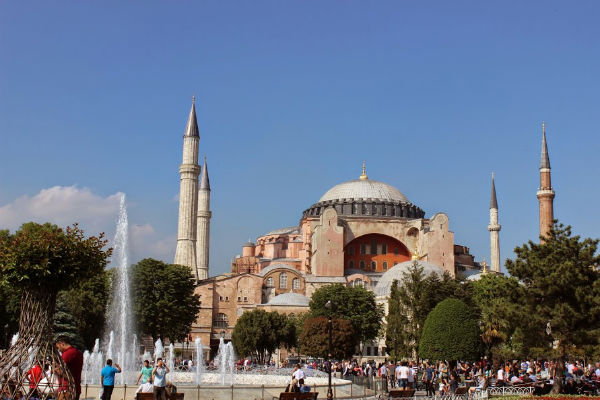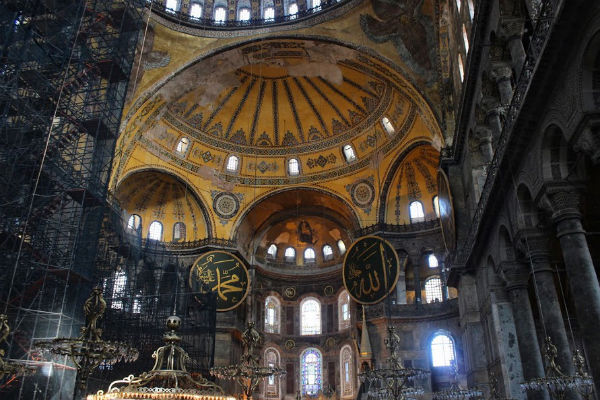I recently had the pleasure of attending a special wine dinner at Ankara Restaurant, one of D.C.’s newest hot spots. The team at Ankara recently revamped their wine list to include an assortment of lesser-known indigenous grape varietals in Turkey. The attendees were invited to taste a selection of wines paired with the Ankara team’s favorite dishes from the menu.
The addition of Turkish wine to the menu is in recognition of a wine renaissance currently underway back home and to acknowledge Turkey’s role as the origin of wine making, dating back thousands of years.
The night began with some bubbly from across the pond. As we waited for guests to arrive, Sommelier Andrew Stover – who was instrumental in curating the wine list – poured glasses of the Ridgeview Fitzrovia Rose Brut. This English sparkling wine is a favorite of the Queen of England and was served to President Obama during his last visit to Buckingham Palace.
Meze Course
Once seated, the meze dishes were served. We shared plates of shaksuka (sautéed eggplant blended with tomato, roasted red pepper, and garlic); kopologu (eggplant blended with garlic yogurt, topped with a tangy tomato sauce); sigara boregi (phyllo pastry stuffed with feta and herbs); and mercimek kofte (lentil and wheat, mixed with herbs and onions). Had trouble pronouncing those names? So did I. Being a complete novice in Turkish food, I had no idea what to expect. But to my delight, I enjoyed every dish!
Meze Course
Salad
Next up was the salad course, along with our first Turkish wine pairing. We were given a delicious light salad - known in Turkish as Coban Salatasi - consisting of cucumbers, tomatoes, radishes, herbs, peppers, and red onions. It’s topped with an even lighter dressing that was made up of lemon juice, olive oil, and salt (although my American side was dying to douse it in balsamic vinaigrette). The salad was paired with Turasan Emir, from the Turasan winery based out of Cappadocia. The wine, similar in style and taste to Pinot Grigio, continued with the trend of lightness with its dry and airy expression mixed with hints of green apple and lemon peel.
First Course
The first course of our meal was a dish called Moussaka. It’s known as a Turkish comfort food that’s typically consumed on a cold night. It’s made by layering eggplant with ground beef as a filling, topped off with béchamel and tomato sauce. It reminded me a lot of lasagna. The wine of choice for this meal was a Turasan Kalecik Karasi, from the same winery as the wine served with the salad. This was a red wine, similar to Pinot Noir, with a smooth expression that blends wild raspberry, red cherry, and white pepper.
Turasan Kalecik Karasi Wine with Moussaka
Second Course
Our second course was something familiar and my favorite food pairing of all time: meat and rice. The dish was called Kuzu Pirzola – lamb chops alongside rice pilaf. Never have I ever had a piece of meat so tender. The meal was accompanied by a pouring of Okuzgozu, which translates to “the eye of the bull”, due to the shape of the grapes resembling a bull’s eye. This wine is produced in the Diren winery, based out of eastern Turkey. The blend mixes fruity with floral flavors, and includes black pepper and baking spices for a tinge of spiciness.
Kuzu Pirzola
Third Course
Our last course – Ali Nazik - was another serving of lamb, but this time cut up into cubes over a bed of creamy eggplant. Our last Turkish varietal was the Karmena Okuzgozu, also produced from the Diren winery. The red blend mixes 5 different grapes (Okuzgozu, Syrah, Merlot, Cabernet Sauvignon and Bogazkere) to give a smooth, savory taste full of fruity flavors.
Dessert
I learned a Turkish meal is never complete without dessert. We were served baklava, a sweet pastry made of phyllo dough, nuts, and held together with syrup or honey. It was extremely tasty! To complete the dessert portion, we were given a choice of Turkish tea or coffee, so I chose the latter. Be warned: Turkish coffee is VERY thick and strong, which can be overwhelming if you’re used to Starbucks or K-cups.
Baklava
Ankara provided an excellent evening of food, spirits, and culture. I loved how close I felt to experiencing an authentic Turkish meal in D.C. Turkey was already high on my travel list, and if the travel gods love me, attending this event will serve as prescience of a looming flight deal (a girl can dream, right?). Visit Ankara’s website for a sneak peek of all the deliciousness and ambiance served. Click here for more information on Turkish viticulture (and phonetic spellings of the wines).













